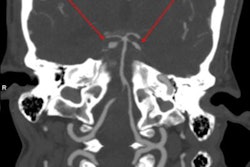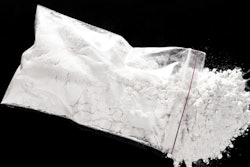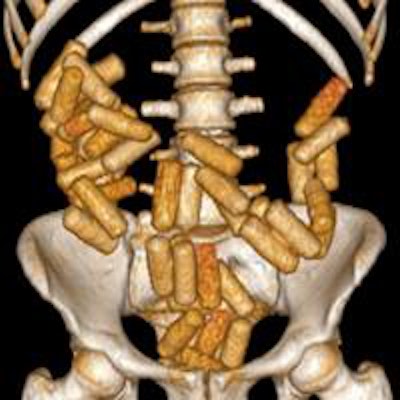
Novel means of concealment used by traffickers, plus the growing frequency of transporting liquids, pose major challenges for radiologists involved in the detection of illicit drugs, according to researchers from Turkey.
Turkey has served as an important route for drug trafficking because of its geographic location connecting Europe to Asia. Many of the illegal drugs from Afghanistan, Iran, and the Far East pass through Turkey in transit to Europe.
To detect illicit drugs, radiologists have had to adapt their techniques, while not losing sight of ethics, in their efforts to help combat trafficking, explain the authors of an article in the current issue of the British Journal of Radiology (April 2016, Vol. 89: 1060, pp. 20150888).
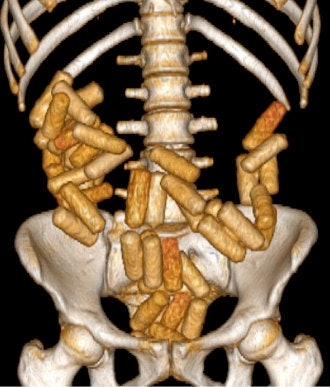 This 3D volume-rendering technique CT image shows numerous large packets of narcotics concealed in a body packer. In a single transport, a body packer can carry 50 to100 packages, each containing 8 g to10 g of narcotic agents, this weighing up to 1 kg in total. Image courtesy of Dr. Mesut Bulakçı.
This 3D volume-rendering technique CT image shows numerous large packets of narcotics concealed in a body packer. In a single transport, a body packer can carry 50 to100 packages, each containing 8 g to10 g of narcotic agents, this weighing up to 1 kg in total. Image courtesy of Dr. Mesut Bulakçı."The detection of many drug mule cases through physical examination or laboratory analysis is difficult. The suspect may also provide false information. Therefore, radiological detection and follow-up play a vital role," lead author Dr. Mesut Bulakçı, radiologist at Istanbul Faculty of Medicine, said in an interview with AuntMinnieEurope.com. "The first medical examination is often performed by the doctor at airports or borders and usually with plain film. After this, the suspects are brought to specialized hospitals like ours for detailed examination."
Between 2010 and 2014, around 50 such cases were brought to Haseki Hospital, where Bulakçı began his research into concealed drug imaging.
Suspects who are found guilty of acting as drug mules can face long prison sentences so traffickers have developed sophisticated methods to conceal illicit drugs. Body packers carry relatively large packets by swallowing them, so detection of drugs in the gastrointestinal tract by plain film or ultrasound is relatively easy, he added.
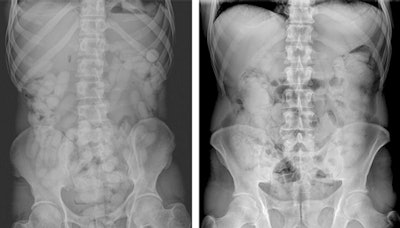 Abdominal x-ray images of packages that contain narcotic materials in solid and liquid forms. Left: A 34-year-old male body packer. In the intestinal lumens, multiple dense packages consisting of powdered cocaine with a scattered formation and ovoid morphology are observed. Right: A 48-year-old male body packer. In the colonic loops, widespread density increments with obscure contours and subtle serpiginous lucencies are observed. Be aware of the fact that contrary to solid drug-containing packages, these types of packages that contain cocaine in liquid form cannot be clearly distinguished. Image courtesy of BJR (April 2016, Vol. 89: 1060, pp. 20150888).
Abdominal x-ray images of packages that contain narcotic materials in solid and liquid forms. Left: A 34-year-old male body packer. In the intestinal lumens, multiple dense packages consisting of powdered cocaine with a scattered formation and ovoid morphology are observed. Right: A 48-year-old male body packer. In the colonic loops, widespread density increments with obscure contours and subtle serpiginous lucencies are observed. Be aware of the fact that contrary to solid drug-containing packages, these types of packages that contain cocaine in liquid form cannot be clearly distinguished. Image courtesy of BJR (April 2016, Vol. 89: 1060, pp. 20150888).In a single trip, a body packer can carry between 50 and100 packages, each containing 8 g to10 g of narcotic agents and weighing up to 1 kg in total. Body pushers, on the other hand, typically carry large packets in the rectum and/or vagina. The packets can usually be detected by physical examination without any need for imaging, but body pushers may also be packers at the same time. A third group known as body stuffers generally possess drugs either for their own use or for dealing on the street. Typically, they hide packets quickly when they encounter the authorities to avoid arrest. Cartels may use children or pregnant women in this capacity.
As drug stuffers carry a small number of small-sized packets, radiological detection is more difficult because the packets are too subtle to be visualized clearly on ultrasound and plain film, according to Bulakçı. Furthermore, traffickers have developed new ways to escape capture. In recent years, cocaine has been prepared with liquid solvents, a method that caught the attention of both the general media and the medical literature in 2012.
Initial modalities for detection of any drugs concealed within the body include x-ray, and ultrasound, but these are sometimes insufficient and can yield false-negative and false-positive results, while other legal and ethical considerations must also be factored into attempts at diagnosis.
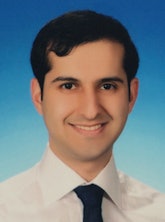 Legal and ethical considerations must be factored in when attempting to diagnose concealed drugs, according to Dr. Mesut Bulakçı.
Legal and ethical considerations must be factored in when attempting to diagnose concealed drugs, according to Dr. Mesut Bulakçı."Detection of packets filled with liquid cocaine via plain film and ultrasound is more difficult than those filled with solid drugs. Furthermore, drug mules try to disturb exams by rapid breathing or moving. Suspects are also protected against unnecessary examinations and high-dose radiation," noted Bulakçı, who specializes in body imaging and nonvascular interventional radiology. "Studies show that nonenhanced CT can yield 100% success rates for the detection of solid and liquid drugs. That said, the efficacy of CT in body stuffers is not yet clear as there are just a few papers on this issue."
He said that low-dose CT would obviate excessive radiation exposure in suspects. The role of MRI, however, also remains unclear.
In each radiological examination method, it is important to know how packets containing different materials can be visualized. For example, liquid cocaine is radiopaque with thin lucent lines on plain film, and on ultrasound has a hyperechoic irregular surface with clean shadow. However, on CT it appears hyperdense with thin hypodense lines and a specific jigsaw pattern.
A comparison of further signs for each modality is outlined in the BJR article. The author group from Haseki Hospital and Istanbul Faculty of Medicine has already published various papers on how to image drug mules, the latest of which compares their experiences with data from the medical literature.
"While misdiagnosis of the presence of drugs would lead to the unnecessary detainment of innocent people, failure to detect them would imply the release of a criminal, and illegal drugs being made available. Correct diagnosis by the radiologist, therefore, is vital," he concluded.





